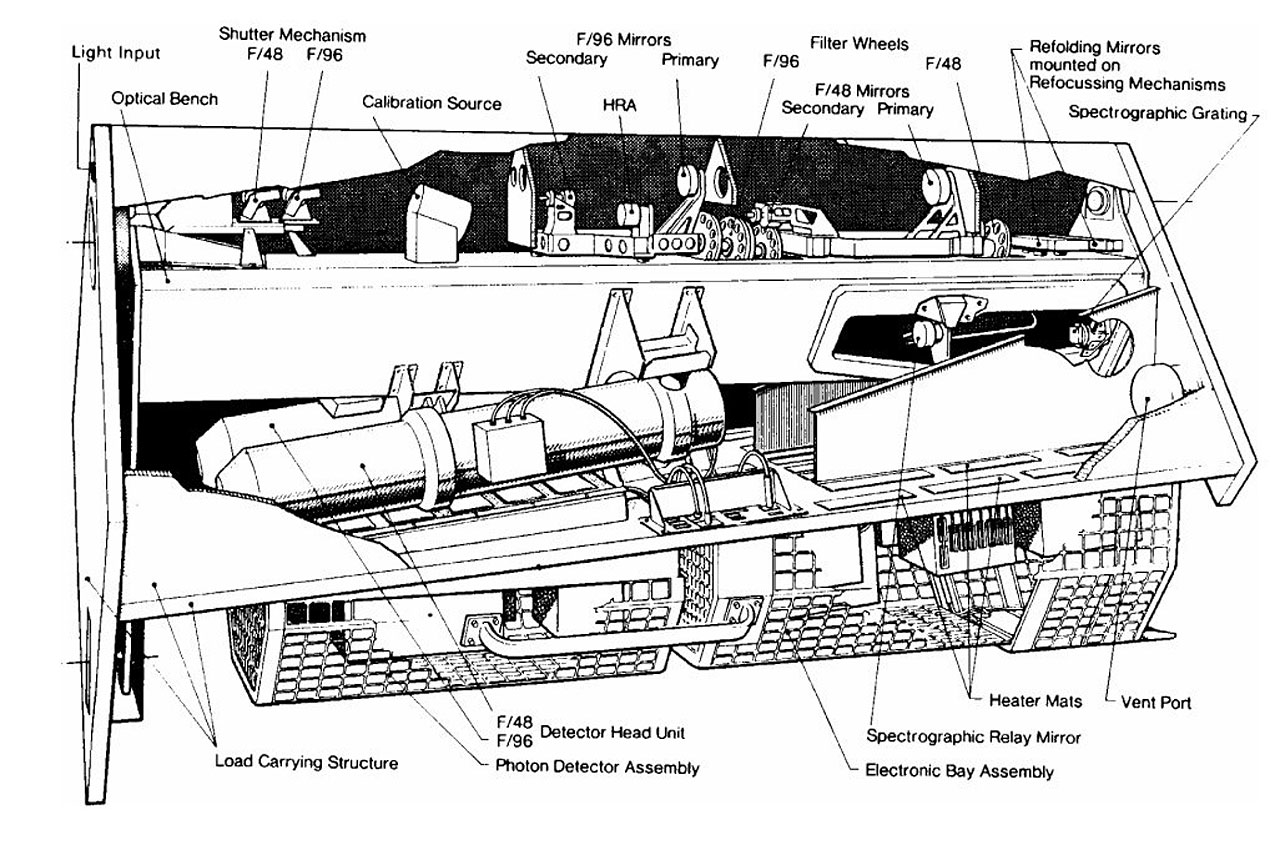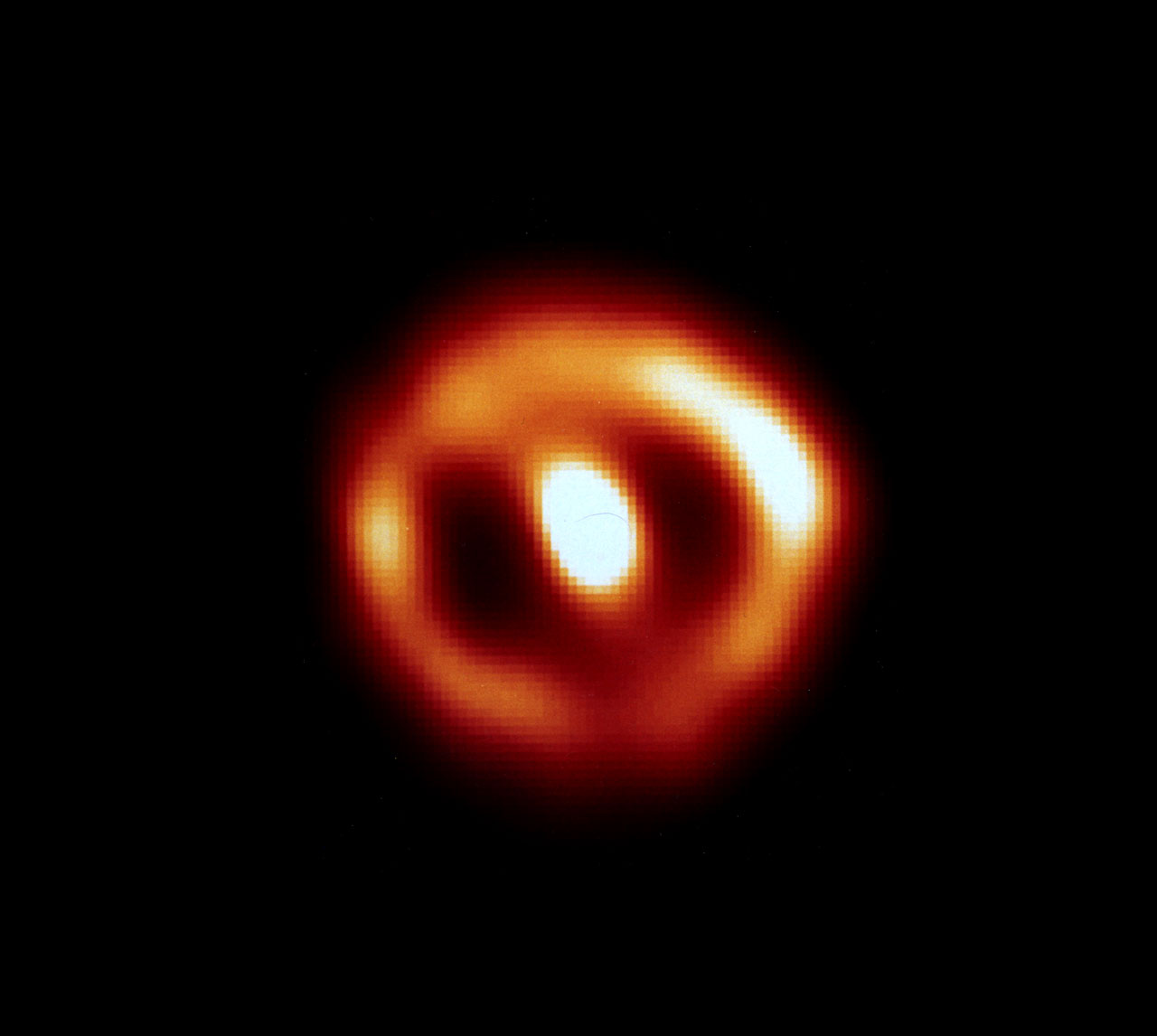Hubble's Instruments: FOC - Faint Object Camera
The Faint Object Camera (FOC) was built by the European Space Agency and was one of Hubble's five instruments at launch.
It was an optical and ultraviolet camera which is able to count the individual rays of light (or light particles/photons) as they arrive. The resolution of FOC was stunning - more than seven times better than Hubble's famous WFPC2 camera.
FOC had two complete detector systems, each producing an image on a phosphor screen that was 100,000 times brighter than the light received. A television camera then scanned this phosphor image.
This television camera was so sensitive that objects brighter than 21st magnitude had to be dimmed by the camera's filter systems to avoid saturating the detectors.
The Faint Object Camera was replaced by the Advanced Camera for Surveys during Servicing Mission 3B.
Since returning to Earth, it has been put on display at the Dornier Museum in Friedrichshafen, Germany.
FOC Facts |
|
| Instrument type | Camera |
| Field of view | "Low" resolution (f/48) - 22 arcseconds "Medium" resolution (f/96) - 11 arcseconds "High" resolution (f/288) - 3.6 arcseconds |
| Resolution | "Low" resolution (f/48) - 0.043 arc-seconds "Medium" resolution (f/96) - 0.022 arc-seconds "High" resolution (f/288) - 0.0072 arc-seconds |
| Wavelength range | 122 to 550 nm |

The FOC - Faint Object Camera onboard Hubble. |

An image taken with FOC. The shell surrounds Nova Cygni 1992 which erupted on February 19, 1992 |